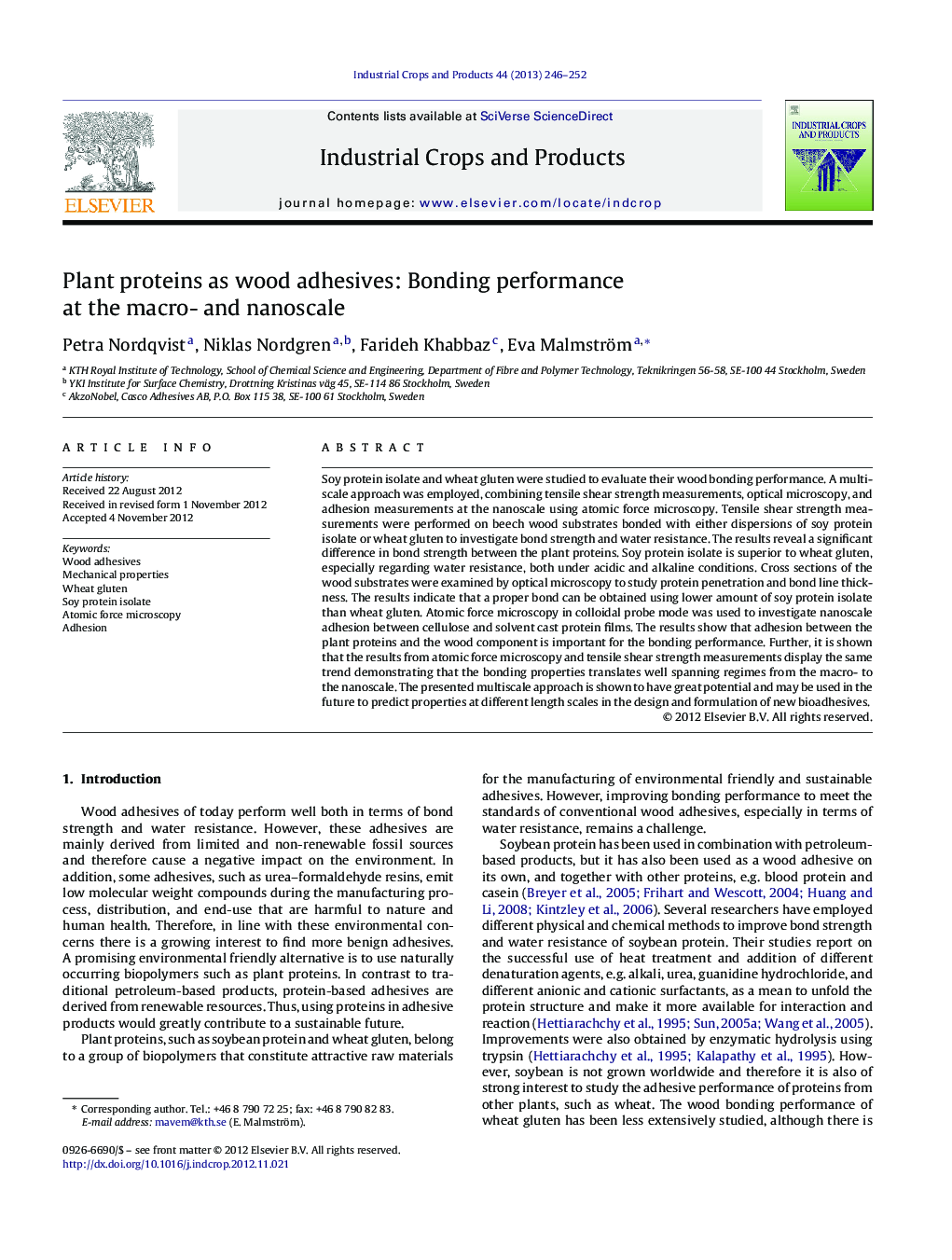| Article ID | Journal | Published Year | Pages | File Type |
|---|---|---|---|---|
| 4513638 | Industrial Crops and Products | 2013 | 7 Pages |
Soy protein isolate and wheat gluten were studied to evaluate their wood bonding performance. A multiscale approach was employed, combining tensile shear strength measurements, optical microscopy, and adhesion measurements at the nanoscale using atomic force microscopy. Tensile shear strength measurements were performed on beech wood substrates bonded with either dispersions of soy protein isolate or wheat gluten to investigate bond strength and water resistance. The results reveal a significant difference in bond strength between the plant proteins. Soy protein isolate is superior to wheat gluten, especially regarding water resistance, both under acidic and alkaline conditions. Cross sections of the wood substrates were examined by optical microscopy to study protein penetration and bond line thickness. The results indicate that a proper bond can be obtained using lower amount of soy protein isolate than wheat gluten. Atomic force microscopy in colloidal probe mode was used to investigate nanoscale adhesion between cellulose and solvent cast protein films. The results show that adhesion between the plant proteins and the wood component is important for the bonding performance. Further, it is shown that the results from atomic force microscopy and tensile shear strength measurements display the same trend demonstrating that the bonding properties translates well spanning regimes from the macro- to the nanoscale. The presented multiscale approach is shown to have great potential and may be used in the future to predict properties at different length scales in the design and formulation of new bioadhesives.
Graphical abstractFigure optionsDownload full-size imageDownload as PowerPoint slideHighlights► Wood bonding performance of wheat gluten and soy protein isolate at acidic and alkaline pH. ► Evaluation at the macro-, micro-, and nanoscale. ► Tensile shear strength measurements, optical microscopy, and atomic force microscopy. ► Soy protein isolate is superior to wheat gluten at all the investigated pH conditions. ► Soy protein isolate: higher bond strength and higher interfacial adhesion toward cellulose.
